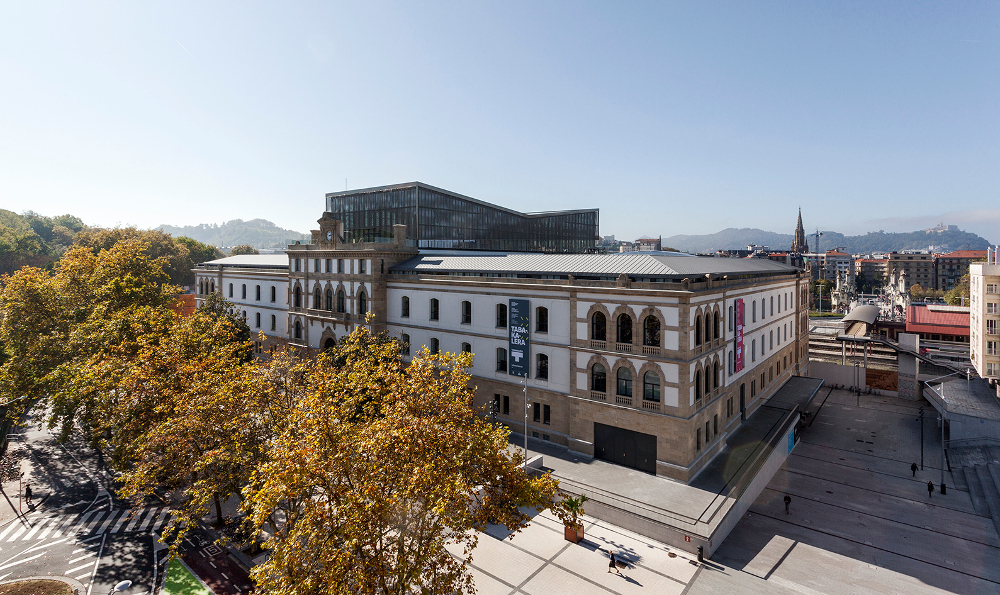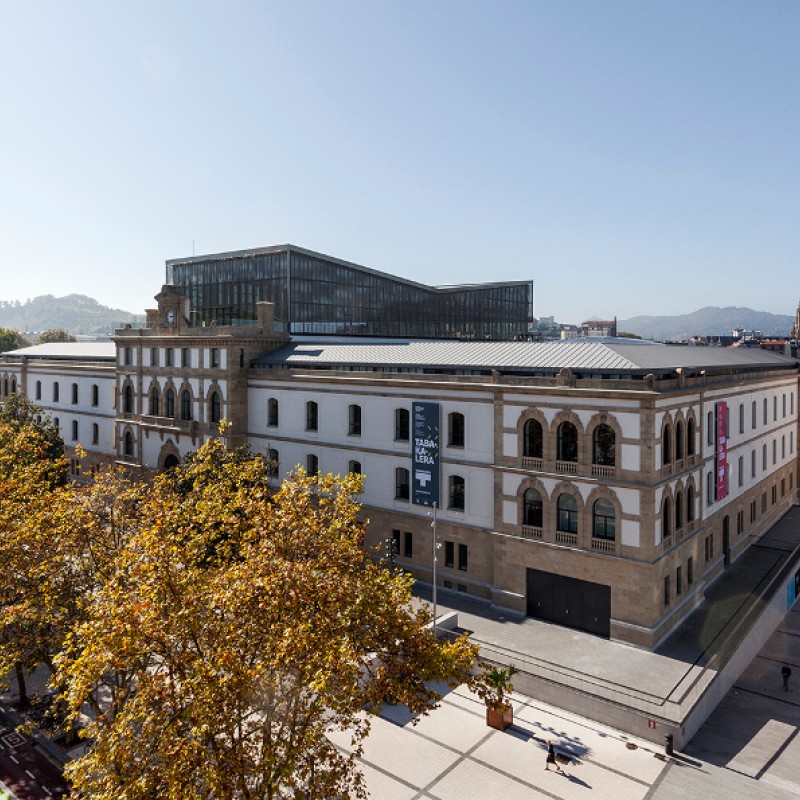Tabakalera-International centre for contemporary culture
Andre zigarrogileak plaza, 1, 20012 San Sebastián, Spain
| Former Use: | Tobacco factory |  |
| New Use: | Art Museum | |
| Category: | Culture | |
| Website: | https://www.tabakalera.eu/en | |
| Original Architect: | Mauro Serret | |
| Reuse Architect: | Jon and Naiara Montero | |
| Construction year(s): | 1886 - 1913 | |
| Reuse year(s): | 2015 - |
Description:
The Tabakalera building was San Sebastian's tobacco factory for 90 years (1913-2003). It was a state-owned factory, built on municipal land, after 25 years of complicated construction work. The tobacco factory was built following the style of old factory houses, around four large patios. It is one of the largest plots of land within the urban area of Donostia-San Sebastian: The main building is a rectangle measuring 113×75 metres. Tabakalera’s high point was during the 1920s, when the production of cigarettes and cigars was mechanised. In 1925 over one thousand people worked there, the majority women.
During the second half of the 1960s, the factory went through another technological renewal and production reached 250 million packets a year. During this period it ceased to produce Farias cigars to specialise in cigarettes: Celtas, first, and Ducados and Davidoff from the seventies onwards.
After the tobacco industry was privatised in Spain, the new company – Altadis – closed eight of its factories, among them the one in San Sebastian, in 2003. Faced with this situation, San Sebastian City Council, the Provincial Council of Gipuzkoa and the Basque Government purchased the building to turn it into an international culture centre.
The Tabakalera building renovation work started in April 2011. The rehabilitation was carried out following the 3 en Raya project by Jon and Naiara Montero, who won the International Competition for the Architectural Renovation of Tabakalera held in 2008. The aim of this project was to adapt the former tobacco factory to the needs of a centre for contemporary culture. The the interior of the building underwent radical changes. To a large extent, the main facade was left as it was, to preserve the building’s character.
In order to turn the former tobacco factory into a contemporary culture centre, the site was opened to the city, removing fences and the surrounding walls and creating an internal street with free movement. A glass prism was built to make the building more visible and to give the city another landmark. The centre’s spaces are hybrid and adaptable to a large variety of uses, and there is a new main entrance. Beside it, there is a space called Storage that preserves the original structure of the building [...} (2)
Relevant Literature:
- Asociacion Vasca de Patrimonio Industrial y obra publica, 2001, Viejas fábricas Nuevos usos, Bilbao, pp.76-77
- https://www.tabakalera.eu/en/who-we-are/history
